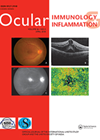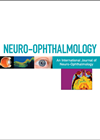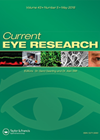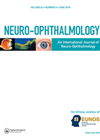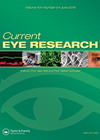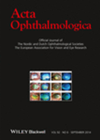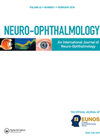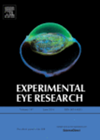
Journal Reviews
ARN in North Africa
Acute retinal necrosis (ARN) is a rare cause of uveitis. This paper aims to outline the clinical features of 12 patients with ARN in a referral centre in Tunisia, North Africa. A retrospective review of case notes was carried out....
A case series of acute visual loss following excessive alcohol and / or drug use
This study presents three cases of so called Saturday night retinopathy, an acute visual loss following intravenous drug abuse and stupor, leading to continuous pressure on the orbit while asleep. All three cases presented with acute vision loss and had...
Air toxicity on retinal pigment epithelium
This study investigated the potential toxic effects of air on primary human retinal pigment epithelial (RPE) cells in vitro. Clinically during pars plana vitrectomy air is used as either a temporary tamponade during air-fluid exchange or mixed with gas to...
Structural effects of migraine on the retina
Migraine is a common, chronic, multifactorial neuro-vascular disorder typically characterised by recurrent attacks of disabling headache and autonomic nervous system dysfunction (migraine without aura). Up to one third of patients also have neurological aura symptoms (migraine with aura). The objective...
Nicotine accelerates diabetes induced retinal changes
This study investigated the influence of nicotine in an experimentally induced diabetic rat model. They used non-invasive high-resolution spectral domain optical coherence tomography (SD-OCT) imaging to provide quantitative information on the temporal alterations of retinal structures at the micrometer resolution...
Are retinal vein occlusions seasonal? And if so why might that be?
Some studies have reported a strong seasonal pattern to central retinal vein occlusion (CRVO) occurrence with a peak in January, but other studies have failed to replicate this finding. The authors sought to determine data for Stockholm’s seasonal variation in...
Retinal blood flow changes in glaucoma
This study examined the changes in retinal blood flow and vessel diameter after IOP reduction in high- and low-pressure glaucoma; exfoliation glaucoma (ExG) and normal-tension glaucoma (NTG). Glaucoma progression is seen at times in eyes despite IOP reduction and changes...
A rare case of post-traumatic central retinal artery occlusion
Central retinal artery occlusion is rarely associated with traumatic optic neuropathy, this case report details of one such case. The reported case is of a ten-year-old boy presenting after a fall from height with loss of vision in one eye....
Ocular ischaemic syndrome in a rat model
Ocular Ischaemic syndrome is a devastating eye disease caused by severe carotid stenosis. This study’s purpose was to develop a reliable rat model for this syndrome by subjecting rats to common carotid artery occlusion and sham surgery. Rats were assigned...
Early intraocular complications of aneurysmal subarachnoid haemorrhage
The aim of this study was to estimate the incidence of a whole spectrum of early intraocular complications in patients suffering from aneurysmal subarachnoid haemorrhage (SAH) and to identify factors that are potentially associated with these fundus findings. In total...
Diagnostic procedures in vitreoretinal lymphoma.
This paper presented a retrospective review of medical records of HIV negative immunocompetent patients diagnosed with vitreoretinal lymphoma between 1994 and 2012. The aim of the paper was to evaluate the type and number of diagnostic interventions required to confirm...
Akimba mice, a model of human diabetic retinopathy
Diabetic retinopathy (DR) is a major complication of diabetes and a growing problem as the systemic disease becomes more prevalent. DR develops insidiously from an asymptomatic form through to vascular damage that leads to oedema and breakdown of the blood-retinal...

